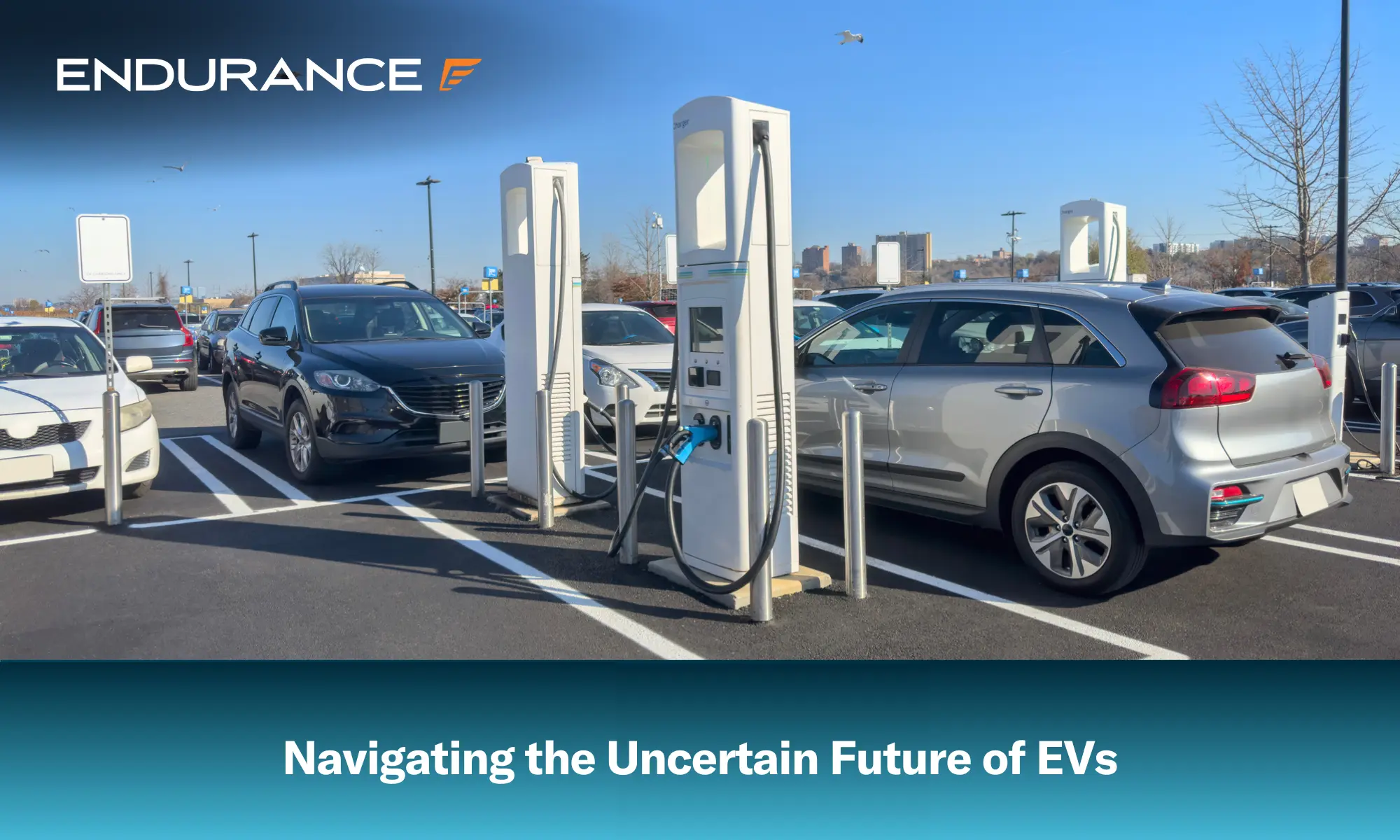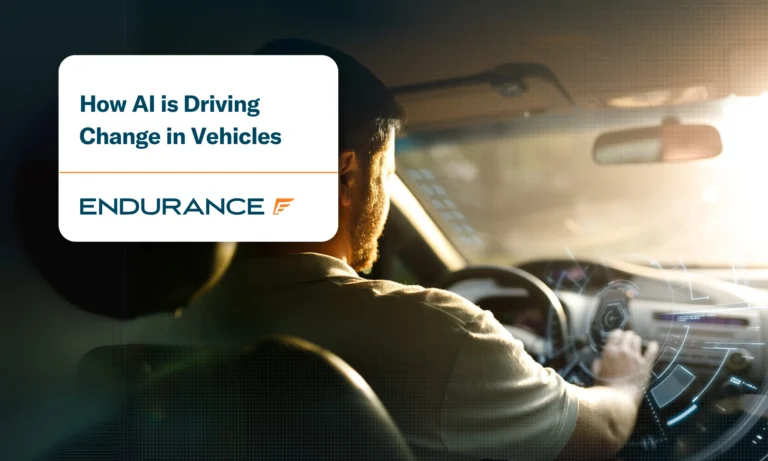Navigating the Uncertain Future of EVs: What’s Next?

The recent advancement of electric vehicles (EVs) is transforming personal transportation in a way not seen since the rise of the internal combustion engine over a century ago. Backed by government initiatives, automakers are changing what they sell, and consumers must cope with a new world of options and considerations. However, as is often the case with the latest technologies, the path to adoption is often filled with bumps and bruises.
Let’s explore what drives today’s electric vehicle market and look at what the future might bring. It’s a dynamic and sometimes complex world with many players, including policymakers, consumers, and manufacturers.
Emerging Trends in EV Adoption
Although Tesla EV sales have recently taken a hit, reports Kelley Blue Book, EV adoption continues its upward climb. Much of this advancement is due to several factors:
Government Incentives
EV adoption in the U.S. would be at a snail’s pace if it weren’t for government rebates and tax credits that significantly reduce the upfront cost of purchasing a battery electric vehicle. Before the passing of the Inflation Reduction Act, consumers didn’t see the benefit of the federal EV credit until tax time. Now, qualified buyers can take up to $7,500 off the price of a new EV at the time of purchase or lease (on select EVs). There’s even an instant credit available of up to $4,000 for qualifying used EVs.
At the same time, many states offer equally generous incentives, leading to some remarkable deals for the right buyers in the right locations. A case in point is the eye-popping $19-a-month lease offered by one dealer to Colorado residents who only needed to spend $2,000 upfront to drive a Nissan Leaf for two years. The state’s $8,100 EV credit made this arrangement possible.
Expanding Charging Infrastructure
Policymakers and the automotive industry realized early on that EV success depends on a robust charging infrastructure. Tesla understood this from day one, launching its own Supercharger Network, to which other automakers are gradually gaining access.
One part of the Inflation Reduction Act includes incentives for local government and private companies to invest in the charging infrastructure to reach a goal of 500,000 new public charging stations by 2030. In addition, some automakers and utility companies are incentivizing homeowners to install Level 2 (240-volt) chargers in their residences.
Consumer Preferences
Shifting consumer preferences are significantly influencing EV adoption. However, the pace is much slower in America than in other countries. Bloomberg reports that the EV adoption rate in the U.S. is 8.1% as of early 2024. In contrast, EVs account for almost 80% of the market in Norway (the world leader) and about 24% in China.
Nonetheless, the Bloomberg analysis points to a 5% adoption rate as the tipping point for consumer acceptance. At this amount, EVs start to become more noticeable and pave the way for more gasless vehicles on the road. The report estimates that if the U.S. catches up to Europe, one-fourth of all new cars sold in the country could be all-electric by 2026.
Car buyers have many reasons for going electric:
- Trying something new and trendy
- Reducing emissions or becoming more environmentally conscious
- Taking advantage of financial incentives
- Being swayed by lower maintenance costs and no gas station visits
Additionally, the driving experience of EVs, characterized by instant torque and quiet operation, is winning over many consumers. Tesla’s success has also played a crucial role in changing perceptions about electric cars, demonstrating that they can be both high-performance and desirable.
Technological Advancements in EVs
The tech-heavy nature of EVs means what’s in place today is ripe with change for tomorrow. Several key advancement areas are driving the evolution of EVs:
Battery Technology
Battery pack technology lies at the heart of the EV movement. Continuous improvement can address consumer concerns like range anxiety and cost while improving manufacturer targets such as efficiency and size.
Older EVs, like the Volkswagen e-Golf and first-generation Nissan Leaf bought by early adopters, once boasted range capacities approaching 100 miles. Today, mainstream EVs typically have range capacities of 250 to 300 miles, while the top-tier Lucid Air has crossed the 500-mile range benchmark.
Improved charging time is another moving target closely associated with battery tech. Some newer and more advanced EVs measure charging time in minutes instead of hours. Under peak charging conditions, a Lucid Air can add 200 miles of range in 12 minutes. Certain Hyundai and Kia EVs can add about 170 miles of range at the same time. These charging rates aren’t as quick as conventional gas station fill-ups, but they’re getting closer.
Yet the true game changer lies a few years ahead. Toyota and Nissan have forecasted that solid-state battery technology will be used in their EVs by the end of the decade. If these and other automakers deliver on their promises, solid-state EV batteries will increase range, reduce charging time, and improve risk (there is less fire risk compared to lithium-ion batteries).
Autonomous Driving
Given that most EVs rely on electronic controls for many systems, the availability of autonomous driving seems to be a logical next step. In fact, most electric vehicles already offer advanced driver assistance systems (ADAS), including adaptive cruise control, lane-keeping assistance, and automatic emergency braking; some EVs even have automated parking.
The unanswered question is how far autonomous driving can go. Improvements in ADAS tech are sure to arrive, leading to safer and less stressful driving. But, the idea of a totally hands-free driving system that’s capable of door-to-door operation via ordinary streets and highways has yet to become reality.
Ford and Volkswagen spent billions on Argo AI, only to see its doors shut in 2022. Another company, Ghost Autonomy, suffered the same fate. Meanwhile, Google-backed Waymo and General Motors’ Cruise unit have faced additional regulatory scrutiny as their test fleets of self-driving cars have struck pedestrians and run afoul of traffic laws.
Further, while Tesla touts its Autopilot and Full Self-Driving systems, these features are only Level 2 ADAS offerings with questionable marketing labels. Mercedes-Benz is the first automaker to receive approval for a Level 3 system, and that’s only in a few states. For reference, ADAS technology ranges, as defined by SAE, from 0 to 5, with 0 being basic assistance features like automatic emergency braking or blind-spot monitoring. More autonomous driver support, like hands-free highway driving, doesn’t arrive until Level 2. Actual autonomous driving kicks in at Level 4, while Level 5 means a self-driving car that can operate in any condition.
In short, EVs that can drive themselves are a long way off.
Connectivity and Smart Features
Yet some other advanced technologies are already being used in EVs. One such technology is over-the-air software updating, which Tesla introduced in 2012.
Vehicle-to-grid (V2G) technology is another compelling development. This technology allows EVs to draw power from the grid and feed energy back, helping EV owners power their homes during power outages. In several well-publicized incidents, Ford F-150 Lightning owners have used their EV trucks to provide electricity in post-storm settings.
Bidirectional charging is closely related to V2G technology and enables one EV to charge another EV. The F-150 has this capability, as do some EVs from Hyundai, Kia, and other brands.
Potential Challenges Facing the EV Market Share
Despite growing adoption rates and promising EV technology, several significant challenges could impact the future of electric vehicles:
Supply Chain Issues
While pandemic-related production challenges are in the rearview mirror, EVs face supply chain issues relating to battery production. Lithium, cobalt, and other rare earth elements are critical for battery production. However, the mining and production of these resources are concentrated in a small number of countries, which brings geopolitical factors into play.
Fewer players can lead to shortages, price volatility, and other conditions that can hamper EV production or make it more expensive.
Automakers and battery manufacturers are exploring alternative battery chemistries and investing in recycling technologies to mitigate these risks. In addition, recent U.S. legislation is incentivizing automakers to build domestic processing and battery production facilities, but these efforts are just beginning. Nonetheless, supply chain issues remain a potential roadblock to more efficient EV production.
Infrastructure Development
The ultimate electrification goal is to have EV charging stations as commonplace as gas stations, but this will remain a work in progress for years. While population centers have an ever-increasing charging infrastructure, the same can’t be said for rural and less developed areas.
The need for widespread and reliable charging infrastructure remains a critical challenge. While charging networks are expanding, the pace of development varies significantly between regions and countries. Rural and less developed areas, in particular, lag in charging infrastructure, potentially limiting EV adoption in these regions.
According to the U.S. Department of Energy, California has over 17,000 charging stations, or one for every 2,294 people in the state. In contrast, South Dakota has 183 chargers, or one for every 4,967 residents. EV owners in South Dakota and similarly sparsely populated states have a more challenging time finding a charger, which makes electric vehicle adoption more difficult in these regions.
Further, the electrical grid will face new challenges as EV adoption increases. Upgrading grid infrastructure to handle increased demand and integrating smart charging solutions to manage peak loads will require significant investment and coordination between utilities, governments, and the private sector.
Consumer Concerns
Arguably, the greatest obstacles to EV adoption are the concerns faced by many consumers:
Resale Values and Depreciation
At one time, EV resale values were relatively stable and even elevated for Tesla models. However, last year, Tesla started dropping prices to spur electric vehicle sales and take on rivals, which prompted price cuts from Ford and other automakers. In 2024, Hertz decided to rid its fleet of 20,000 Teslas and other EVs due to higher-than-expected upkeep costs and lukewarm customer demand. This double whammy caused depreciation to accelerate for many electric vehicles, especially Tesla.
As a result, buying a new EV can be a gamble regarding resale value. Depreciation could advance even further if upcoming solid-state battery technology makes today’s EV look ancient in terms of range and charging time. Consumers concerned about their wallets may hold off on buying new EVs or steer toward used electric cars instead.
High Initial Costs
While federal and state credits help offset the higher initial cost of EVs, these incentives don’t apply to every electric car or consumer due to qualification requirements. Further, these rebates may not be enough to create an even playing field between EVs and ICE (internal combustion engine)-powered cars. Buyers may vote with their bank accounts and save the EV for their next vehicle.
Range Anxiety
As mentioned, newer EVs typically offer 250 to 300 miles of range, enough for most people’s commuting and daily driving activities. However, range anxiety is still an issue for drivers who regularly travel long distances or are on road trips. Such activities require careful planning for charging stops, which may not be very convenient on less-traveled highways.
Charging Access
For many urban and apartment dwellers, particularly those without access to home charging, the practicality of EV ownership remains a challenge. While public charging infrastructure is expanding, potential buyers remain concerned about the convenience and reliability of charging access. Charging reliability is another crucial concern, as public charging stations aren’t always in working order. The last thing any EV owner wants to face is pulling into a charging station with a near-empty battery only to find a malfunctioning charger.
Extended Warranties: Protecting Your EV Investment
As the future of EV cars becomes more popular, extended car warranties are becoming an important consideration for buyers looking to protect their investments and manage the uncertainties associated with new technology. This protection is even more vital when buying a used EV that may not have factory coverage.
Endurance offers comprehensive vehicle service contracts for Tesla models. This exclusive coverage safeguards EVs up to ten years old and protects qualified high-voltage batteries (traction batteries) and other vital components.
Learn how an Endurance auto protection plan can safeguard your Tesla or hybrid from expensive repairs. Call (800) 253-8203 to speak with an Endurance advisor or request a FREE quote on our exclusive Tesla coverage. Explore the Endurance blog for the latest information about electric vehicles, car care, auto reviews, warranty advice, and more.













Dave is an automotive journalist combining a deep passion for cars, hands-on mechanical experience, and dealership insight. His writing primarily focuses on consumer auto advice and enthusiast pieces. A regular contributor to SlashGear.com and other leading automotive platforms, Dave earned his BA in Journalism from The George Washington University.